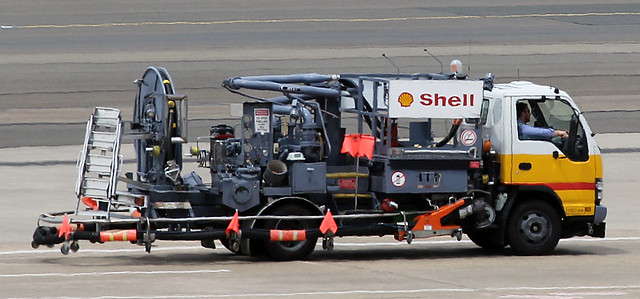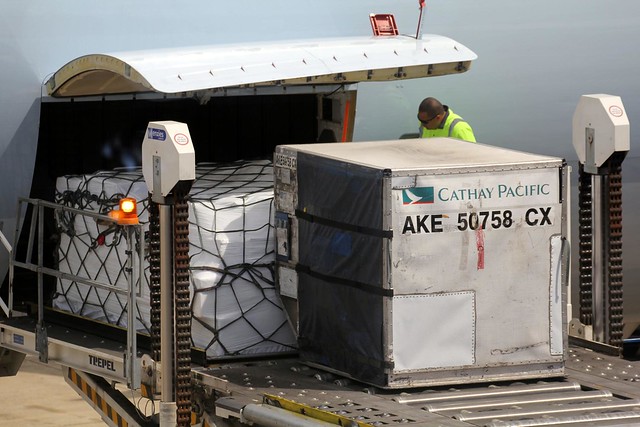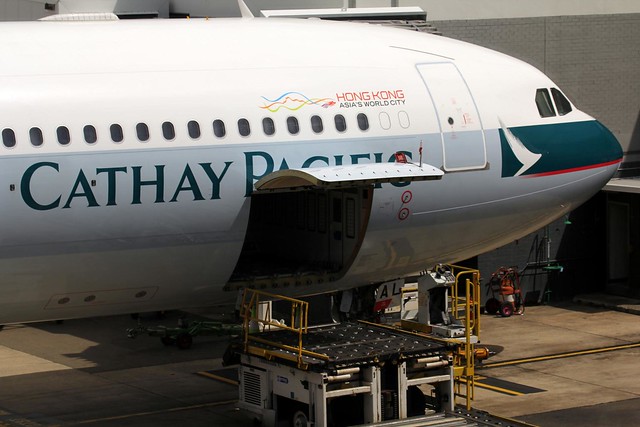The aviation industry is going through a turbulent time,
which has led it to look at a wide range of technologies and alternative
fuels as ways for airlines to lower costs and improve efficiency.

Current headwinds in aviation include factors such as high fuel prices, the introduction of carbon pricing in some jurisdictions such as Australia and the EU as well as softer demand for premium seats due to an uncertain business climate in North America and Europe.
China is predicted to overtake the USA by 2014 as the biggest spenders on business travel. Will the growing middle class in China, India and other strong exporter countries in Asia spend more on business and leisure travel outside of their nations?

Considering the recent release of the federal government Asian Century report is Australia’s flag carrier Qantas making the right move in disengaging from many international routes in favour of selling codeshares seats on its partner Emirates?
This move could allow other strong airlines in the Asia Pacific to grab market share for good.
I interviewed executives from Cathay Pacific, a leading Asia Pacific airline and one of the world’s largest cargo airlines to find out how they are dealing with the challenges their industry is facing.
James Woodrow General Manager Cargo Sales & Marketing for Cathay Pacific told me that

While there are no specific plans for this within the next 5 or 6 years, John Slosar CEO of Cathay Pacific is on the record as saying that by then
Five or six years may in fact be too long a waiting time as I have observed during flights in the last year or two that passengers from the economy section to business class and in between often ignore the in-flight entertainment screen in favour of their own tablet or ebook reader loaded with content that specifically appeals to them.
Dr Mark Watson, Head of Environmental Affairs at Cathay Pacific Airways told me that “we’re looking at how we can move away from conventional fuels, to more sustainable biofuels. That’s going to be a real challenge for us as a company and indeed for the industry. However we’re committed, our suppliers are committed and that’s the way we believe we can genuinely reduce our carbon footprint.”
Cathay Pacific joined the Sustainable Aviation Fuel Users Group (SAFUG) to understand the challenges, what would work and what was viable for themselves and for the region.
SAFUG members agree that biofuels should “not displace or compete with food crops” which is important because motor vehicle biofuels like American corn ethanol are exacerbating the food crisis in developing countries.
One key is to find feedstocks that will be close to Cathay’s points of origin. Dr Watson believes that transporting aviation biofuel feedstocks long distances to be blended and processed is counter intuitive for the purpose of reducing costs and emissions.
In that sense we are lucky because Asia Pacific has an abundance of 2nd generation sustainable biofuel feedstocks being grown all around the region such as Jetropha, Camelina and Switchgrass. In terms of next generation biofuel sources algae etc are possibilities. However there is no obvious biofuels “silver bullet” play at the moment, airlines are very much in learning and experimenting mode.
Cathay Pacific’s parent company the SWIRE group has an undated objective to have a net zero impact. This may give the airline an advantage because SWIRE is a giant conglomerate company that owns land, shipping etc so could potentially provide an end to end alternate fuel solution.
Understandably this means airlines are under the pump to try and reduce fuel costs. Engineering teams are always looking to make planes more efficient eg by regularly washing engines to reduce fuel consumption. Taxiing time at airports is kept to a minimum and wherever possible when parked aircraft use ground based electrical power to reduce fuel consumption before the aircraft takes off.
In terms of recently launched innovative aircraft when the Airbus A380 first began to be used by Singapore Airlines in 2007 it’s CEO said that “in seat/mile terms we achieve overall a 20% better fuel burn than our 747-400′s.” The A380 is 15 tonnes lighter than it would be if made entirely of metal, it generates 50% less noise on departure than the 747-400 on take off, all while carrying 40% more passengers.

New generation aircraft such as Cathay’s long range 747-300 Boeing are being replaced by 777-300ER which are 26% more efficient. Cathay is also effectively the first customer for the Airbus A350-1000 which Dr Watson described as “the most efficient aircraft ever produced” with a claimed dramatic improvement by Airbus of 25% lower fuel burn per seat.
IT systems are also very important eg while a plane is inflight real time wind data is used to plan an optimised route to minimise flight time and fuel consumption.
In mid-2012 Cathay Pacific announced it would implement aviation service provider ARINC’s advanced information management system into its full fleet of Airbus and Boeing aircraft. This deployment represents the airline industry’s most significant upgrade in flight deck communications technology in more than 30 years.
ARINC’s communications solution creates a true “e-Enabled aircraft” by offering fully-customized, integrated communications management of flight operations, data communication services, cabin services, maintenance, diagnostics and vital safety information.
Aircraft manufacturers Boeing and Airbus and their engine partners such as GE and Rolls-Royce are vying with each to reduce fuel consumption in new models, which results in emissions falling accordingly and the new planes are also quieter when operating at airports.
Interestingly according to ARINC, aviation has embraced the trend of managed services adopted by other industries. Even as important a part as an engine might not be owned by the aircraft operator, instead being leased on a contract with long term financing and maintenance included.
The aviation players which will be profitable and successful in the long term know that they have to invest significantly in long term technological innovations to keep the pressure down on costs, meet the comfort and cost expectations of customers as well as increasingly also regulators who expect the industry to pull its weight in reducing emissions.
NOTE: I flew to Hong Kong as a guest of Cathay Pacific to discuss the future of aviation. This is the original extended version of a feature article written by me for Business Spectator.


Current headwinds in aviation include factors such as high fuel prices, the introduction of carbon pricing in some jurisdictions such as Australia and the EU as well as softer demand for premium seats due to an uncertain business climate in North America and Europe.
China is predicted to overtake the USA by 2014 as the biggest spenders on business travel. Will the growing middle class in China, India and other strong exporter countries in Asia spend more on business and leisure travel outside of their nations?

Considering the recent release of the federal government Asian Century report is Australia’s flag carrier Qantas making the right move in disengaging from many international routes in favour of selling codeshares seats on its partner Emirates?
This move could allow other strong airlines in the Asia Pacific to grab market share for good.
I interviewed executives from Cathay Pacific, a leading Asia Pacific airline and one of the world’s largest cargo airlines to find out how they are dealing with the challenges their industry is facing.
Weight Reduction
Weight is a deadly serious topic for Airlines. Cathay has a taskforce that is focused on this issue, even the fuel carried is optimised so it is enough with a safety margin but not too much.James Woodrow General Manager Cargo Sales & Marketing for Cathay Pacific told me that
“we’re now using new carbon fibre containers for CX freight replacing the traditional aluminium ones. These are more durable, they’re lighter. All this reduces the weight”.

While there are no specific plans for this within the next 5 or 6 years, John Slosar CEO of Cathay Pacific is on the record as saying that by then
“given the popularity of tablet PCs, passengers [may] no longer need some of the onboard entertainment facilities, like for example, the seat back personal TV screens … it remains an idea at the present time”.This would trim one or two tonnes of weight from an aircraft, thereby saving fuel and removing a lot of wiring and seat bulk as well.
Five or six years may in fact be too long a waiting time as I have observed during flights in the last year or two that passengers from the economy section to business class and in between often ignore the in-flight entertainment screen in favour of their own tablet or ebook reader loaded with content that specifically appeals to them.
Alternate Fuels
The International Air Transport Association (IATA) announced in 2009 that the airline industry is committed to achieving carbon-neutral growth by 2020.Dr Mark Watson, Head of Environmental Affairs at Cathay Pacific Airways told me that “we’re looking at how we can move away from conventional fuels, to more sustainable biofuels. That’s going to be a real challenge for us as a company and indeed for the industry. However we’re committed, our suppliers are committed and that’s the way we believe we can genuinely reduce our carbon footprint.”
Cathay Pacific joined the Sustainable Aviation Fuel Users Group (SAFUG) to understand the challenges, what would work and what was viable for themselves and for the region.
SAFUG members agree that biofuels should “not displace or compete with food crops” which is important because motor vehicle biofuels like American corn ethanol are exacerbating the food crisis in developing countries.
One key is to find feedstocks that will be close to Cathay’s points of origin. Dr Watson believes that transporting aviation biofuel feedstocks long distances to be blended and processed is counter intuitive for the purpose of reducing costs and emissions.
In that sense we are lucky because Asia Pacific has an abundance of 2nd generation sustainable biofuel feedstocks being grown all around the region such as Jetropha, Camelina and Switchgrass. In terms of next generation biofuel sources algae etc are possibilities. However there is no obvious biofuels “silver bullet” play at the moment, airlines are very much in learning and experimenting mode.
Cathay Pacific’s parent company the SWIRE group has an undated objective to have a net zero impact. This may give the airline an advantage because SWIRE is a giant conglomerate company that owns land, shipping etc so could potentially provide an end to end alternate fuel solution.
Fuel Economy & Younger Plane Fleet
Cathay Pacific CEO John Slosar told the Wall Street Journal in mid-2012 that “fuel expenses have been at ‘crippling highs’ for at least a year [and] fuel could account for about 65% of total costs on some long-haul flights”.Understandably this means airlines are under the pump to try and reduce fuel costs. Engineering teams are always looking to make planes more efficient eg by regularly washing engines to reduce fuel consumption. Taxiing time at airports is kept to a minimum and wherever possible when parked aircraft use ground based electrical power to reduce fuel consumption before the aircraft takes off.
In terms of recently launched innovative aircraft when the Airbus A380 first began to be used by Singapore Airlines in 2007 it’s CEO said that “in seat/mile terms we achieve overall a 20% better fuel burn than our 747-400′s.” The A380 is 15 tonnes lighter than it would be if made entirely of metal, it generates 50% less noise on departure than the 747-400 on take off, all while carrying 40% more passengers.

New generation aircraft such as Cathay’s long range 747-300 Boeing are being replaced by 777-300ER which are 26% more efficient. Cathay is also effectively the first customer for the Airbus A350-1000 which Dr Watson described as “the most efficient aircraft ever produced” with a claimed dramatic improvement by Airbus of 25% lower fuel burn per seat.
IT systems are also very important eg while a plane is inflight real time wind data is used to plan an optimised route to minimise flight time and fuel consumption.
In mid-2012 Cathay Pacific announced it would implement aviation service provider ARINC’s advanced information management system into its full fleet of Airbus and Boeing aircraft. This deployment represents the airline industry’s most significant upgrade in flight deck communications technology in more than 30 years.
ARINC’s communications solution creates a true “e-Enabled aircraft” by offering fully-customized, integrated communications management of flight operations, data communication services, cabin services, maintenance, diagnostics and vital safety information.
Aircraft manufacturers Boeing and Airbus and their engine partners such as GE and Rolls-Royce are vying with each to reduce fuel consumption in new models, which results in emissions falling accordingly and the new planes are also quieter when operating at airports.
Interestingly according to ARINC, aviation has embraced the trend of managed services adopted by other industries. Even as important a part as an engine might not be owned by the aircraft operator, instead being leased on a contract with long term financing and maintenance included.
Hope On The Horizon?
Aviation is a bellwether for the global economy, when the economy is in downturn aviation is one of the first sectors to feel the pain. Scenario planning may be a good method to hypothesise potential “what if” situations and the most optimal decisions an airline can take if they occur.The aviation players which will be profitable and successful in the long term know that they have to invest significantly in long term technological innovations to keep the pressure down on costs, meet the comfort and cost expectations of customers as well as increasingly also regulators who expect the industry to pull its weight in reducing emissions.
NOTE: I flew to Hong Kong as a guest of Cathay Pacific to discuss the future of aviation. This is the original extended version of a feature article written by me for Business Spectator.

No comments:
Post a Comment